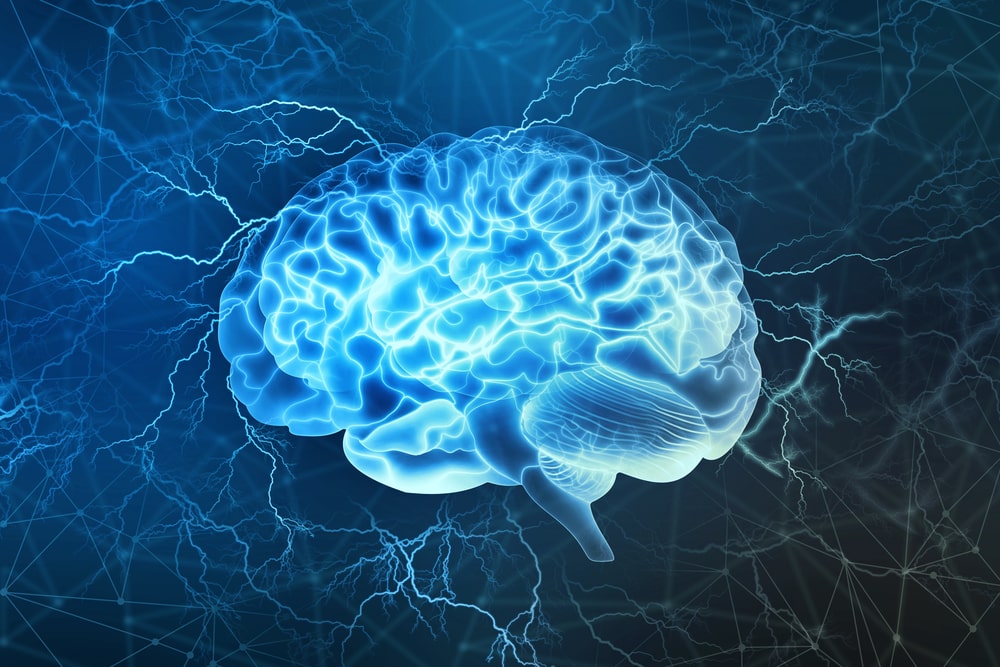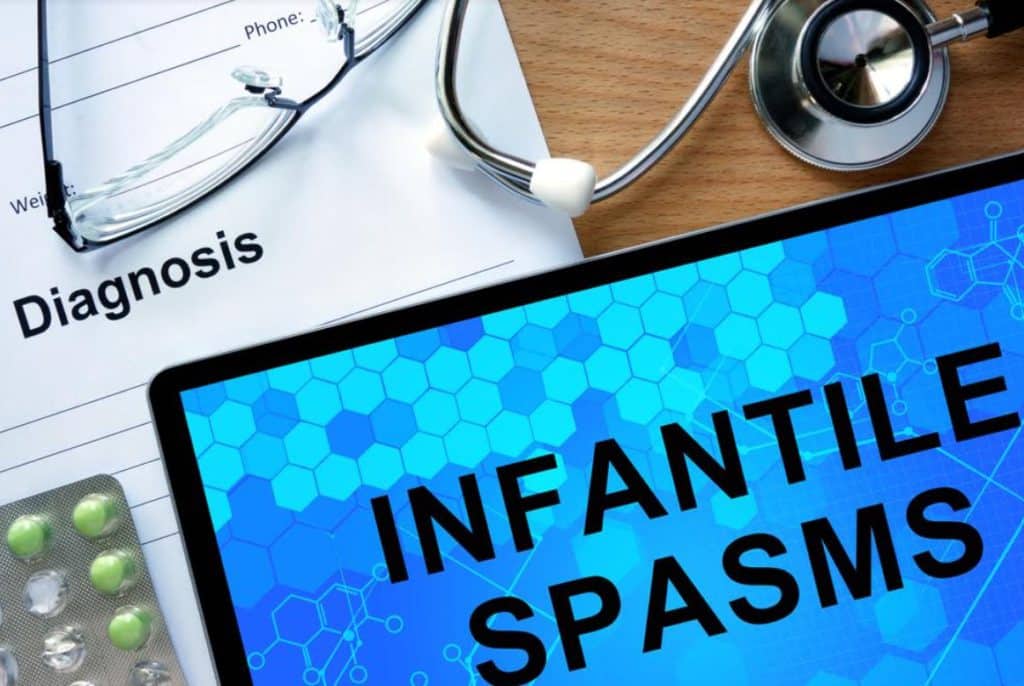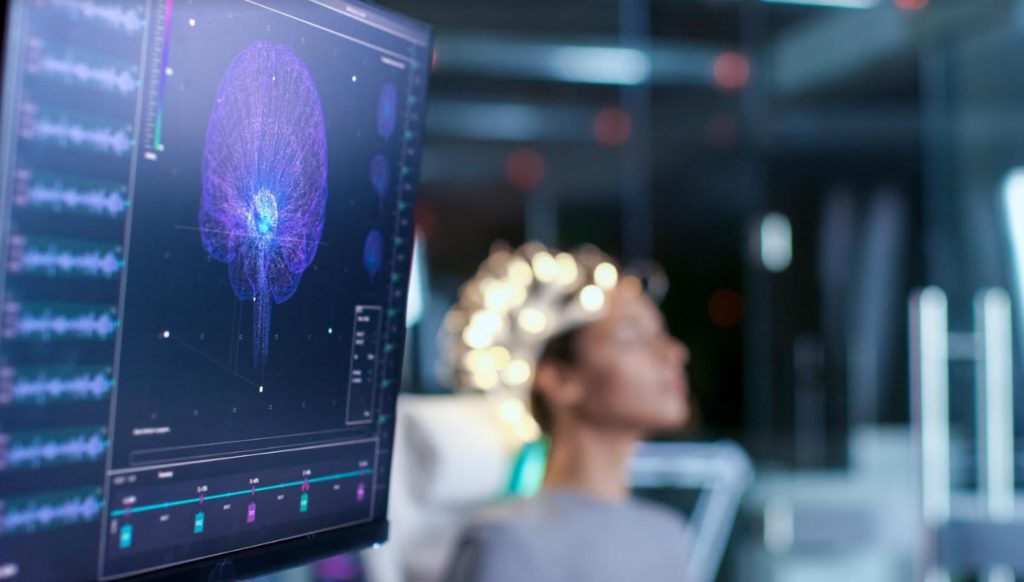Babies are precious beings. As a result, it is really important for every parent or caregiver to pay close attention to how they act and respond to the environment (Of course, this is crucial when you consider the obvious fact that he/she can’t speak, yet). In the first 12 months of life, some babies suffer from a form of childhood epilepsy called infantile spasms.
In this article, you’ll learn about infantile spasms; what they are, the causes, symptoms, and treatments.
What does Infantile Spasm mean?
Infantile spasms, a type of epilepsy that affects 1 in 2,000 kids, were first identified with a set of symptoms known as West syndrome. It usually starts between 2 and 12 months old and peaks between 4 and 8 months. This syndrome is considered a severe brain disorder.

The seizures associated with this form of epilepsy, known as “spasms,” resemble fast body jerks, occasionally accompanied by head dips or extended arms. Although these seizures are short, they might happen in groups. Before they become more severe or regular, many parents initially mistake these spasms for colic, reflux, or “sleep jerks.” Children with or without documented brain damage or other health issues may experience them.
Infants with infantile spasms frequently already have developmental deficits or developmental regression, or they do later in life. If your infant is having spasms, you should take them as quickly as you can to the doctor.
Remember, early detection and intervention are essential.
What is Infantile Spasm like?
Even though these seizures may only last a second or two, they frequently occur in quick succession, with each spasm taking place every 5–10 seconds in a sequence. A spasm causes a rapid stiffening of the body, possible arches in the back, and possible forward bending of the arms, legs, and head. Infantile spasms, however, can occasionally be difficult to detect—possibly merely causing the eyelids to roll up or a slight stomach crunch.
They rarely happen while a baby is sleeping and are more frequent right after they wake up. You can also read this post to know why your baby sleeps the way he/she does.
With infantile spasms, you notice your child is:
- Smiling less
- Inconsolable
- Unhappy
- More irritable
- Less interactive and engaged in the environment
Causes of Infantile Spasm and other Risk Factors
According to doctors, there are lots of health conditions (about 200) that can result in infantile spasms. Some of the causes develop prior to the baby’s birth, whereas others develop after the baby is born. A brain injury caused by a stroke or meningitis may have occurred in certain newborns. Some children may have developmental issues with their brains or have genetic mutations from birth.
Infantile spasms are more likely to occur in people with specific medical and genetic disorders, such as Down syndrome. Tuberous sclerosis complex, a hereditary disease, is also a very frequent cause. It causes non-cancerous tumors to spread to many bodily areas, including the kidneys, skin, and brain of your infant. Doctors are unable to determine the source of this type of epilepsy in 20 to 30 percent of children.
It is crucial to identify the cause of infantile spasms since it has an impact on the prognosis and course of treatment.

Other causes of infantile spasms include:
- Brain injury
- Problems with the way the brain formed
- Changes in brain structure
- Lack of oxygen to the brain
- Brain infections
- Lesions on the brain
- Bleeding inside the skull
- Inflammation in the brain
- Metabolism disorders
- Vitamin B deficiency
What are the Symptoms of Infantile Spasms?
Spasms in infants can cause a variety of symptoms. Infantile spasms might start in some kids without any developmental issues or previous diagnoses. Infantile spasms, however, typically start in kids after a diagnosis of another brain condition. For instance, it might start following a stroke. Or it could start after another type of epilepsy manifests itself. When infantile spasms start, some kids already have serious developmental issues.
Your baby’s body will stiffen or tense up quickly and for only a few seconds during an infantile spasm. Their head, arms, and/or legs may bend forward, and their back may arch. Infantile spasms frequently occur in a cluster, one after the other, with 5- to 10-second breaks in between. Your baby might act upset or cry following a spasm or series of spasms, although not always.
Infantile spasms can occasionally be quite mild and challenging to detect. Infantile spasm subtle symptoms include:
- Eyes rolling up
- Belly tensing up
- Chin movements
- Grimacing
- Head nodding
You’ll probably notice more changes in your child soon after they begin to have spasms, such as:
- Loss of developmental milestones they had previously reached, such as rolling over, sitting, crawling, and babbling
- Loss of social interactions and smiling less
- Increased fussiness or silence.
Try recording your child’s spasms if you can so you can share the video with their pediatrician. Infantile spasms must be identified as soon as possible. Consult your child’s pediatrician as soon as possible if you suspect that your child is experiencing infantile spasms.
How are infantile spasms diagnosed?
A pediatric neurologist or pediatric epileptologist may need to examine your child. To confirm the diagnosis of infantile spasms, they will request an electroencephalogram (EEG) test, along with another test to determine the cause. It can be more challenging for medical professionals to pinpoint the source of infantile spasms because there are hundreds of potential causes.

The tests your child’s doctor may request to identify the source of the infantile spasms include the following:
- Magnetic Resonance Imaging (MRI) brain scan: An MRI brain scan gives you a painless visual representation of your child’s brain’s tissues and structures. To create precise images, MRI requires a big magnet, radio waves, and a computer. It does not employ X-rays (radiation). Your child’s doctor can use an MRI to learn what is causing your child’s spasms.
- Genetic and metabolic testing: If your child’s MRI results are normal, their doctor will probably request additional tests to identify the origin of the spasms, such as genetic and metabolic studies. Typically, a sample of blood, urine or spinal fluid is needed for these tests.
How are Infantile Spasms Treated?
The first step in the treatment of infantile spasms is to consult your doctor.
Infantile spasms can be treated with any of two first-line methods. In most cases, hormone replacement therapy comes first, followed by a medication known as vigabatrin. You can use these remedies separately or in combination.
- Adrenocorticotropic hormone (ACTH): Your pituitary gland releases ACTH, a hormone that has a significant impact on how your body reacts to stress. The “stress hormone,” cortisol, is produced by the adrenal glands in response to the release of ACTH. A shot of ACTH, a synthetic (man-made) variant of the hormone, is used to alleviate spasms (injection). The initial doses will be given to your child in the hospital so that a medical professional can carefully watch them for any side effects. Your child’s doctor will give you advice on how to administer the injections at home because they will still require ACTH doses for roughly six weeks.
- Oral prednisolone: This drug is a synthetic version of the corticosteroid hormone that your adrenal gland produces. When there are issues with the availability of ACTH, it can be utilized to treat infantile spasms effectively.
- Vigabatrin: This medicine prevents seizures. It is used orally as a tablet or drink.
Additional treatment alternatives if your child doesn’t respond to vigabatrin or hormone treatments include: using the ketogenic diet, yet another anti-seizure drug, When a focalized lesion is what’s causing the infantile spasms, epilepsy surgery may be necessary.
What are the side effects of infantile spasms treatment?
Adrenocorticotropic hormone (ACTH) therapy for infantile spasms may have the following unwanted effects:
- Elevated blood pressure (hypertension).
- Compromised immune system (immunosuppression).
- Swelling (often in their face).
- Irritation and anger.
- Ulceration of the stomach or intestines.
- Glucose passing through urine (pee).
When used to treat infantile spasms, vigabatrin may have the following negative effects:
- Permanent reduction in their field of vision
- Irritability
The healthcare provider for your child will consult with you to choose the most appropriate course of action due to these adverse effects. Additionally, they’ll keep a close eye on your child for any indications of these adverse effects.
Summary
This is a severe immune disorder that affects infants that are less than a year old. The seizures occur in brief quick successions and cause stiffening of both the back, arms, and head.
The moment you notice the signs, it is important to contact your healthcare professional immediately for the correct diagnosis and treatment options.

